Learn how to wash produce to maintain the freshness and safety of your fruits and vegetables. In this comprehensive guide, we’ll explore the best practices to ensure your produce is clean, free from contaminants, and ready to be enjoyed!
(This post is written by Cheerful Choices contributor, Claire Cooney.)

Disclosure: This post may contain affiliate links. All opinions are my own; I never feature a brand that I don’t love! See my disclosure policy for more details.
Table of Contents
Importance of washing produce
We all know fruits and vegetables are full of vitamins and nutrients that are essential to our health. However, it’s also essential to thoroughly wash produce before eating it. This helps wash away any dirt, bacteria, and pesticides.
What are pesticides?
The term, “pesticide,” can have multiple uses. Pesticides are any substance that prevents insects or other animals from eating plants. It is also used to regulate plants, allowing them to grow in the correct proportions. Pesticides are even used to keep soil stable to ensure that it is supplying the plant with the necessary nutrients.
There are also pesticides containing chemicals that can be harmful too. One common pesticide used on the produce is organophosphate, which may negatively impact our nervous system and certain hormone functions after too much exposure. The main component in organophosphate works to kill enzymes in pests that aren’t wanted near the growing produce. When left on fresh fruits and vegetables for human consumption, this same component may have a negative impact on our nervous system. More research is needed to confirm the full health effects.
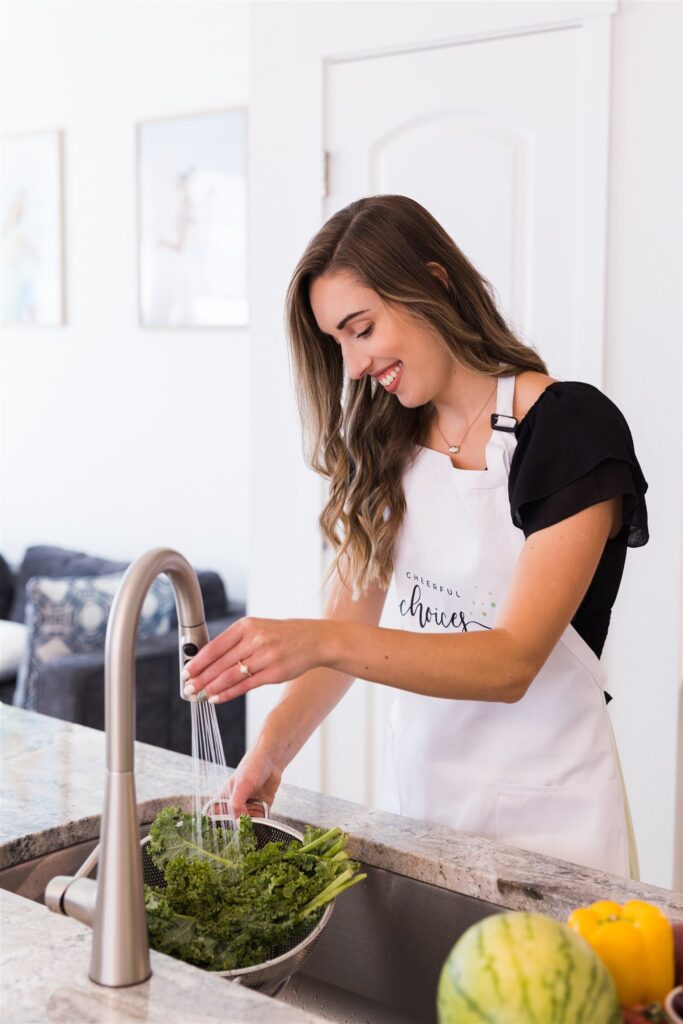
How to wash fruits and vegetables
Here’s how to properly cleanse produce to safely enjoy, elongate it’s fridge life, and have prepped fruits and veggies ready to go!
1. How to wash greens
Leafy greens are items like spinach, arugula, and romaine lettuce. Greens should be washed in a strainer over cold running water for a few minutes to ensure that it’s fully clean. Next, it is important to dry off the greens before storing in the refrigerator. Drying greens allows them to stay fresher for longer and are easier to season.
The fastest way to do this is to utilize a salad spinner that will rid the greens of excess water. Your greens are now ready to be stored, add a paper towel to the bottom of your dish and they should stay fresh for up to one week. Try adding kale to one pot soups or adding leafy greens to a savory peanut salad.

2. How to wash berries
To wash berries, like strawberries, blueberries, blackberries, start with a cold water rinse. Next, soak the berries in a solution of 3 cups water to 1 cup apple cider vinegar. This will give the berries a longer fridge life so that you can enjoy them in dishes such as a healthy strawberry snack or this lemon blueberry mug cake!
Watch how to wash blueberries with this quick video!
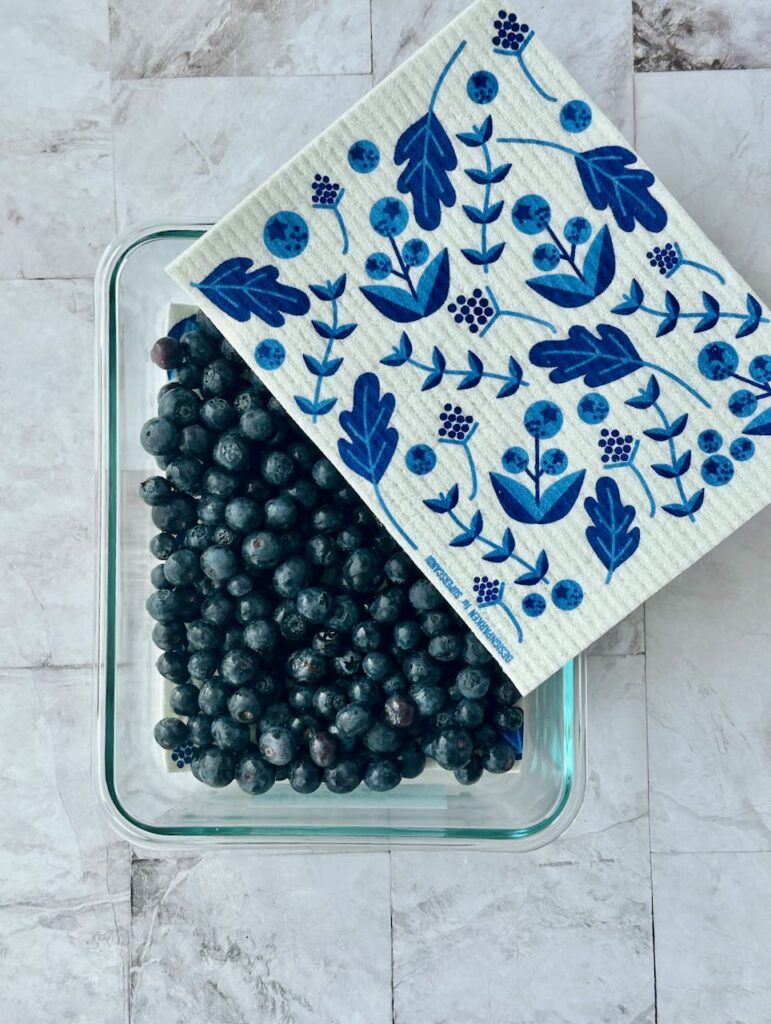
3. How to wash soft skin fruits
Soft skin fruits, like peaches, kiwi, mangos, and apples, need to be washed differently in order to ensure that the nutrient-rich skin remains intact. It’s best to wash these fruits by running them under softer water pressure. We also love freezing these fruits to add to apple banana smoothies or yogurt parfaits.
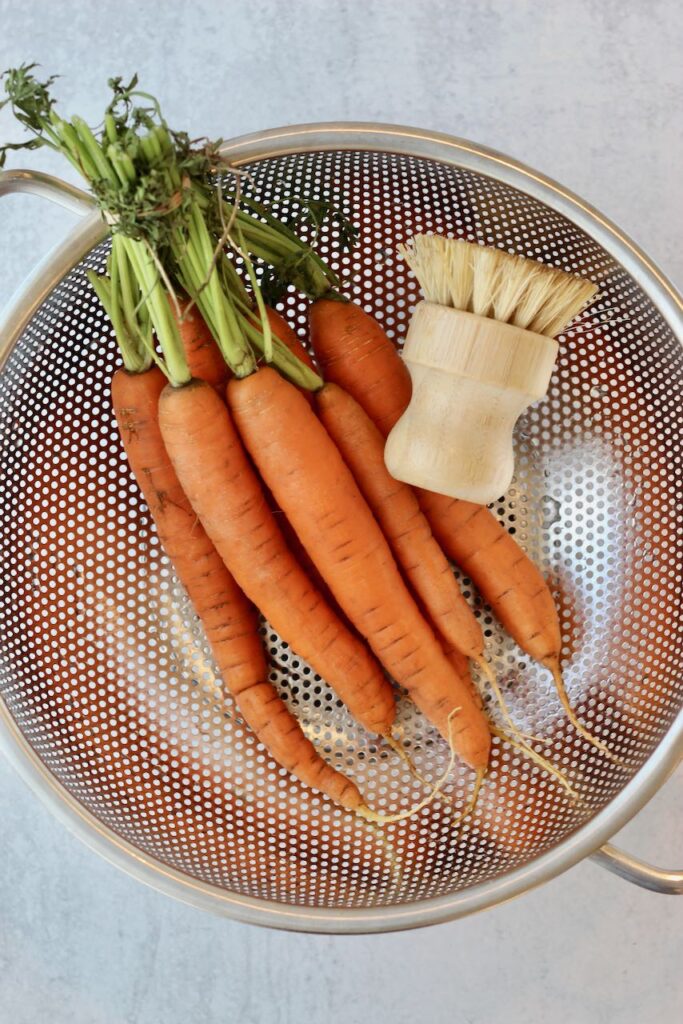
4. How to wash potatoes and root vegetables
Root vegetables are harder veggies like potatoes, beets, and carrots. They grow in the ground so we often purchase these vegetables with a residual layer of dirt.
If you’re not planning on peeling the root vegetable, it’s essential to use a soft brush to scrub the vegetable in order to remove the dirt from the skin. Before and after using a brush, make sure to run the vegetable under cold water to properly cleanse the produce item of residual dirt. Try roasting root potatoes and serve with a smoked paprika aioli.
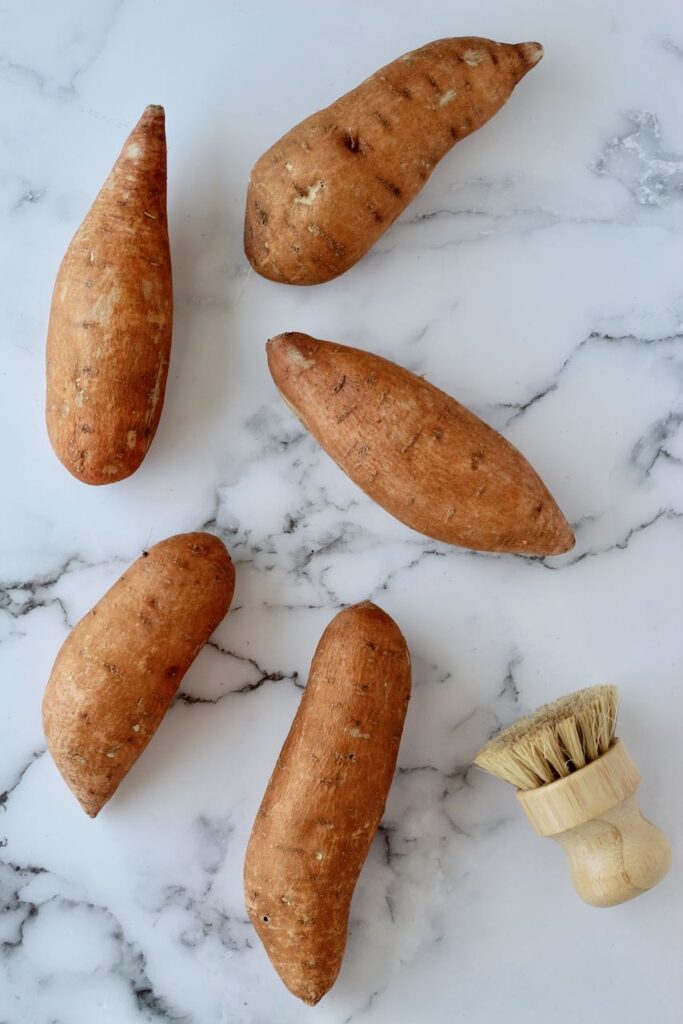
5. How to wash produce with skin
Many produce items with thicker skin may seem safe to eat right after purchasing. These are items like avocados, bananas, and oranges. However when you cut these fruits, the bacteria and pesticides can glide along with the knife into the edible parts of the fruit. Be sure to still clean these fruits and veggies under cold running water before peeling and enjoying.
Overall, properly washing your produce is essential to maintaining your health and keeping you safe from harmful bacterias and pesticides. Happy washing!
Need more help creating meals with fruits and veggies?
In my coaching + cooking program, I help busy people with beginner cooking knowledge become confident in the kitchen so that they can enjoy nourishing foods they love and stress less about mealtime. Click here to learn more about this virtual program led by a dietitian.
share this “how to wash fruits and vegetables” guide on pinterest:
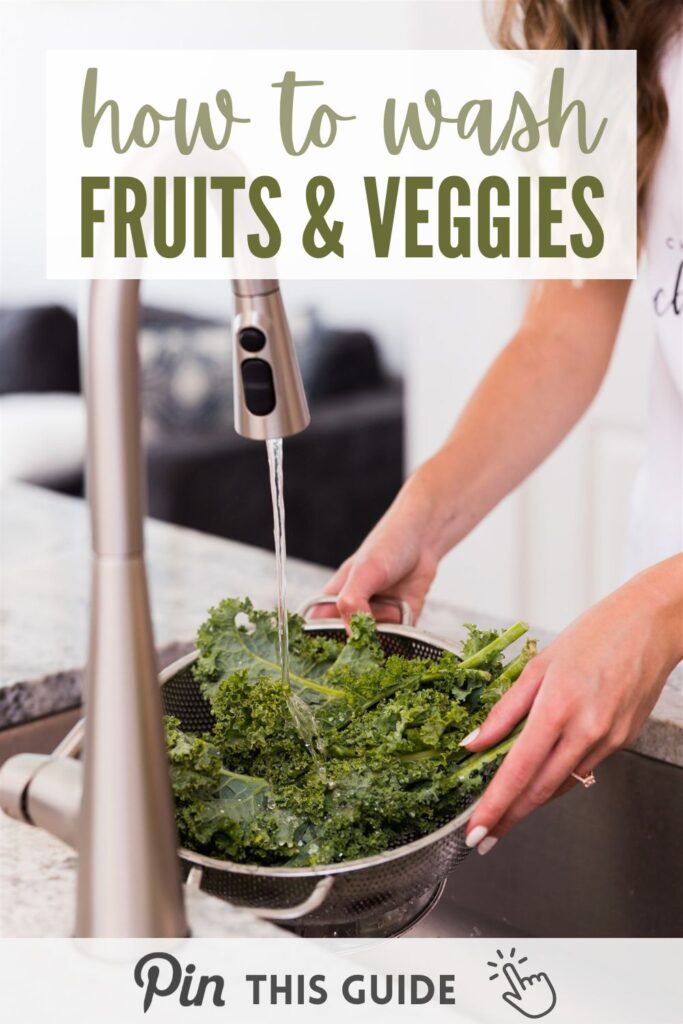

About the guest contributor: Claire is currently a third year student at Colorado State University studying Nutrition and Food Science. She is aiming to become a registered Dietitian in order to teach other people about the importance of nutrition in their everyday life. Claire also enjoys running, hiking, and exploring Colorado in her free time.








0 Comments